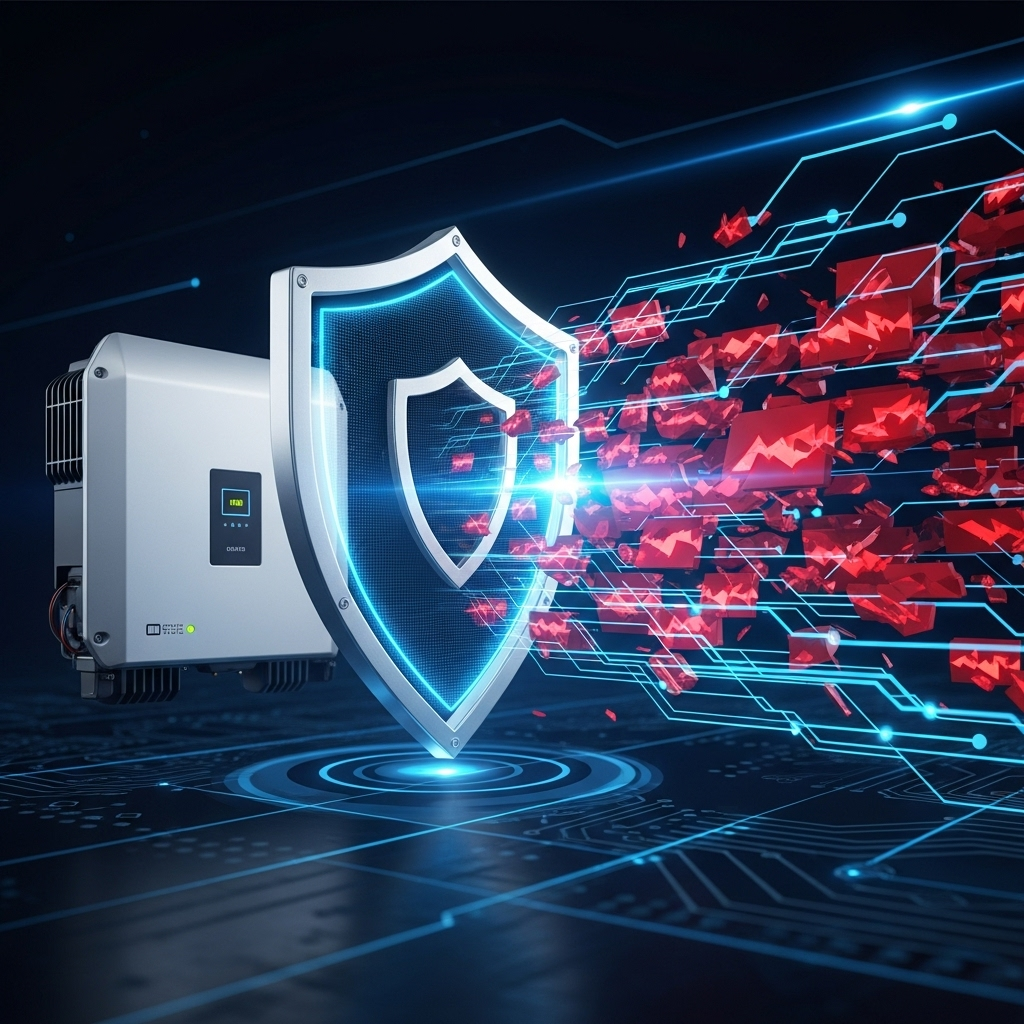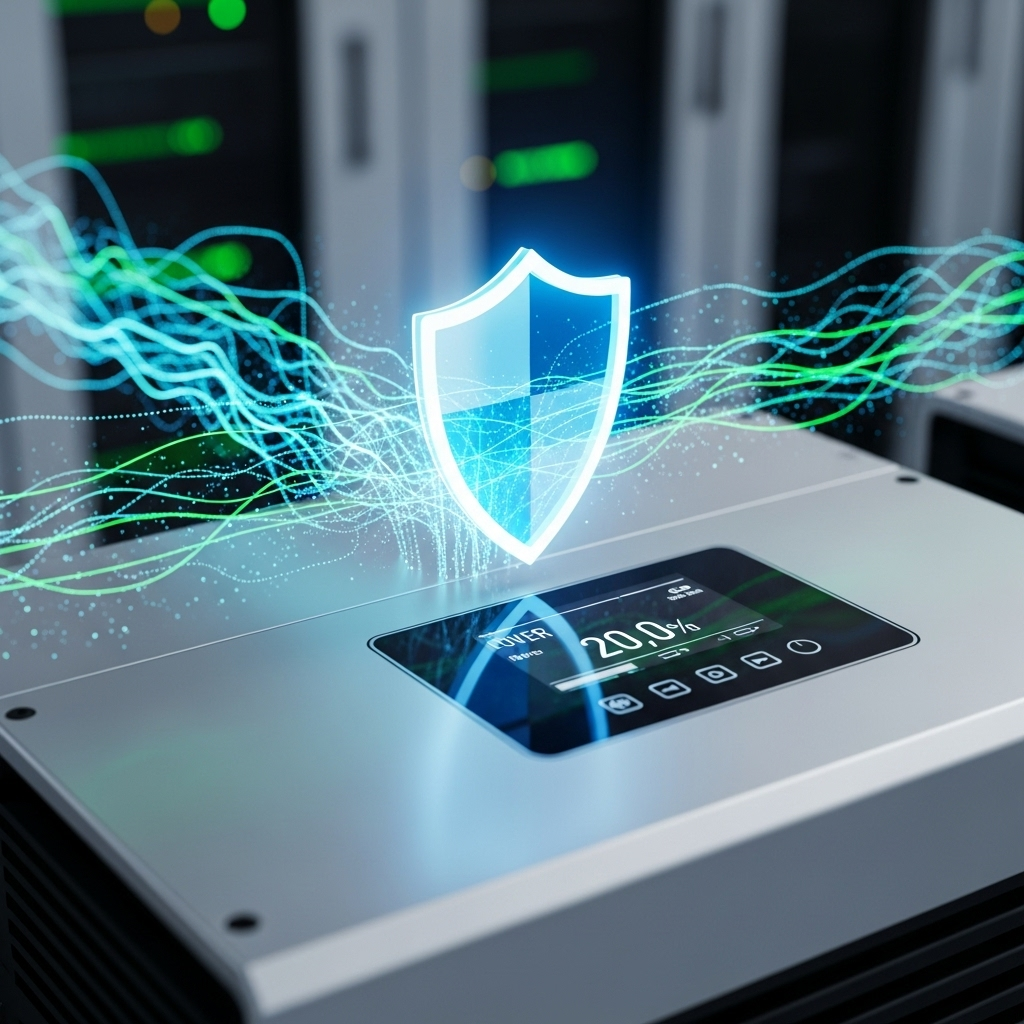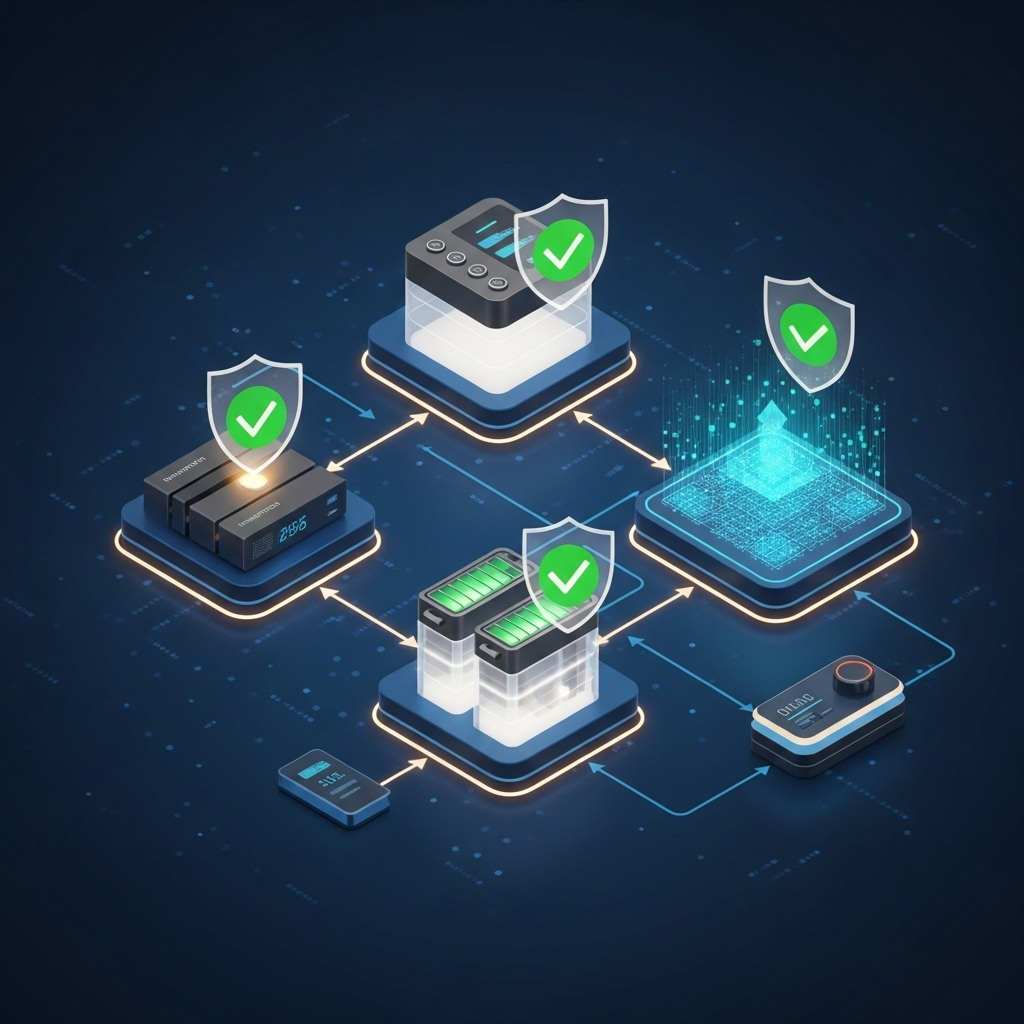Solar inverters are the command center of your energy system. They manage the flow of power, optimize performance, and connect your asset to the grid. Yet, the very channels used to keep them updated with the latest features can become a gateway for cyber threats. A zero-day vulnerability—a flaw unknown to the manufacturer—can be exploited by attackers to disrupt operations, steal data, or cause physical damage. Securing the firmware update process is not just an IT concern; it is fundamental to ensuring your energy independence and the stability of the grid.
The Anatomy of a Firmware Update Attack
To defend against a threat, you must first recognize its form. Attacks on inverter firmware often target the update mechanism itself, exploiting trust and access to inject malicious code. The consequences extend far beyond a single device, potentially impacting grid stability and your energy security.

Identifying the Attack Vector
The primary attack vector is the communication channel used to deliver firmware updates. If this channel is not properly secured, an attacker can intercept the transmission and replace a legitimate update with a malicious one. This is known as a man-in-the-middle attack. The vulnerability is magnified if the inverter does not authenticate the source of the update. According to research from the U.S. Department of Energy, a key challenge is how to securely update software and firmware using processes like code signing. Without these safeguards, the inverter has no way of knowing if the file it receives is from the manufacturer or a malicious third party.
The Impact of a Compromised Inverter
A compromised inverter can have severe consequences. Attackers could shut down your energy system, manipulate its settings to damage connected batteries, or feed false data to grid operators. On a larger scale, a coordinated attack on many inverters could destabilize the electrical grid. As noted in a report by the International Renewable Energy Agency (IRENA), as power hardware becomes more connected, its communication software must be secure to prevent unauthorized access. The Grid Codes for Renewable Powered Systems report highlights that the update functionality itself is a potential attack vector that must be secured against unauthorized interference.
Core Principles for Hardening Firmware Channels
A multi-layered defense is the most effective strategy for securing inverter firmware. By integrating several core security principles, manufacturers and system owners can create a resilient barrier against even the most sophisticated attacks.
Implementing a Zero-Trust Architecture
A Zero-Trust model operates on a simple but powerful principle: never trust, always verify. This approach assumes that the network is potentially compromised and that any request could be malicious. In the context of firmware updates, a Zero-Trust architecture requires that every device, user, and application must be strictly authenticated and authorized before any update can be initiated. This strategy moves beyond traditional perimeter-based security and ensures that only verified sources can interact with the inverter's critical systems. This aligns with strategic goals to develop zero-trust networks for grid operations, which protect critical information and devices.
The Role of Code Signing and Digital Signatures
Code signing is a critical security measure. Before releasing a firmware update, the manufacturer uses a private key to create a unique digital signature for the file. The inverter, which has the corresponding public key, can then verify this signature upon receiving the update. If the firmware has been altered in any way—even by a single byte—the signature will not match, and the inverter will reject the update. This process ensures both the authenticity (it came from the manufacturer) and the integrity (it has not been tampered with) of the firmware file. It is a fundamental tool for creating a trusted update process.
Encrypting Data in Transit
All communication between the update server and the inverter must be encrypted. Using strong protocols like Transport Layer Security (TLS) prevents eavesdropping and data interception. As recommended in guidelines for Distributed Energy Resource (DER) cybersecurity, TLS is essential for ensuring encryption, authentication, and data integrity. It protects the system against man-in-the-middle, eavesdropping, and replay attacks, making the update channel itself a secure and private conduit.
Advanced Strategies for Robust Security
Beyond the core principles, advanced hardware and software techniques provide deeper layers of protection, ensuring the inverter remains secure from boot-up to shutdown.
Secure Boot and Trusted Execution Environments
Security should begin the moment the inverter is powered on. A secure boot process uses cryptographic checks to validate each piece of software, from the initial bootloader to the main operating system, before it is loaded. This prevents an attacker from loading a compromised operating system to bypass other security measures. A Trusted Execution Environment (TEE) takes this a step further by creating an isolated, secure area within the inverter's processor. Critical operations, like decrypting and verifying a firmware update, can occur within the TEE, shielded from the main operating system and any potential malware.
Planning for Failure: Safe Rollback Mechanisms
Even with extensive testing, a new firmware version can sometimes introduce bugs or performance issues. A safe rollback mechanism is a crucial feature that allows the system to revert to a previously known-good version of the firmware. This capability is not just for fixing bugs; it is also a vital security tool. If a malicious update ever manages to get through, the ability to quickly roll back to a secure state can prevent significant damage. The capacity to perform firmware rollbacks is a key functionality for recovering from malware embedded in updates.
| Security Strategy | Primary Function | Impact on Zero-Day Prevention |
|---|---|---|
| Zero-Trust Architecture | Verifies every access request, regardless of origin. | Prevents unauthorized actors from initiating an update. |
| Code Signing | Cryptographically verifies firmware authenticity and integrity. | Blocks tampered or malicious firmware files from being installed. |
| TLS Encryption | Secures the communication channel during the update. | Protects against eavesdropping and man-in-the-middle attacks. |
| Secure Boot | Ensures only trusted software loads at startup. | Prevents attackers from loading a compromised operating system. |
| Firmware Rollback | Allows reversion to a previous, stable firmware version. | Provides a rapid recovery method if a vulnerability is introduced. |
The Synergy Between Secure Updates and System Performance
Hardening firmware update channels does more than just prevent attacks; it builds a foundation of trust and reliability that enhances the entire energy system's performance and value.
How Hardening Improves Reliability
A secure inverter is a reliable inverter. By preventing malicious code from being installed, you eliminate a major source of potential system instability, unexpected shutdowns, and degraded performance. When you can trust that your firmware is authentic and untampered, you can also be confident in the operational data it provides. This reliability is essential for achieving true energy independence and ensuring your system operates at peak efficiency. The International Energy Agency (IEA) points out that regulators must ensure grid codes are updated so that new renewable generation does not negatively affect the resilience or security of the power system, as detailed in their report on Integrating Solar and Wind.
Linking Security to Long-Term Value
Investing in systems with robust security features protects the long-term value of your solar and storage assets. Secure inverters are less likely to suffer from cyber-related downtime, require fewer emergency maintenance calls, and are better positioned to adapt to future grid requirements. A system's security posture is directly linked to its overall operational excellence. For a deeper look into how different components contribute to overall system efficiency, the Ultimate Reference for Solar Storage Performance offers valuable metrics and benchmarks that underscore the importance of reliable components.
Building a Secure Energy Future
Securing inverter firmware update channels is a non-negotiable aspect of deploying modern energy systems. The threat of zero-day vulnerabilities requires a proactive and layered approach to security, starting with the manufacturer's design and extending to the system owner's vigilance. By prioritizing features like Zero-Trust architecture, code signing, encryption, and secure rollback capabilities, you build a resilient foundation for your energy independence. This focus on security ensures your system is not only efficient and powerful but also a safe and reliable contributor to a more stable energy grid.
Frequently Asked Questions
What is a zero-day vulnerability in a solar inverter?
A zero-day vulnerability is a security flaw in the inverter's firmware that is unknown to the manufacturer. Attackers can exploit it before a patch is available, making it a significant threat.
Why is the firmware update process a target for attacks?
The update process has privileged access to the inverter's core functions. If an attacker can hijack this channel, they can install malicious firmware, taking complete control of the device and potentially the entire energy system.
How does code signing prevent firmware tampering?
Code signing uses a cryptographic signature to verify the firmware's origin and integrity. The inverter checks this signature before installation. If the firmware has been altered in any way, the signature will be invalid, and the update will be rejected.
Can I secure my existing inverter, or do I need a new one?
While some security measures can be implemented through network configuration (like firewalls), core features like secure boot and signed firmware updates are built into the inverter's hardware and software by the manufacturer. It is crucial to select inverters designed with these security principles from the start.





Leave a comment
All comments are moderated before being published.
This site is protected by hCaptcha and the hCaptcha Privacy Policy and Terms of Service apply.